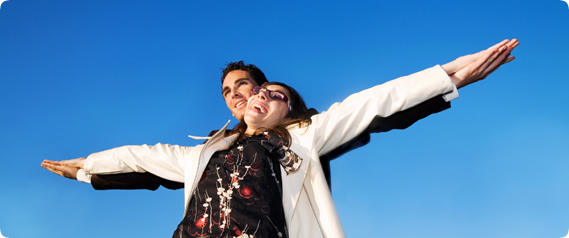Hypnotherapy can help you
- Imagine the freedom of flying anywhere.
- If you could overcome the fear of flying.
- Travel anywhere you want to.
- Visit family or do business abroad.
- Help with flying phobia.
- Hypnotherapy and NLP can help you.
‘Just got back from my hols and wanted to thank you so much for giving me (and my family) our lives back. The flight was great…’ Help With Flying Phobia
It is said that fear of flying is very widespread. Perhaps as many as 1 in 5 people suffer to some extent. They range from those who have never flown to those who used to fly confidently until they developed fear. Through the years we have been able to help many people overcome their ‘flying fear’, or ‘flying phobia’. Usually this has been accomplished with just two to three hours of straightforward work. Quite often one session suffices.
What will you do to sort my flying phobia?
What people describe as their ‘fear of flying’, or ‘phobia of flying’ will vary greatly, so the techniques we use to help you will match your particular circumstances. Essentially, we utilise a combination of NLP and hypnotherapy. These are the techniques we have found to be the fastest, easiest and most effective. The NLP Fast Phobia Process, invented by Dr Richard Bandler, is often the most effective technique to help you get rid of your fear of flying for good. It is not the only thing that we do. Sometimes, simple direct suggestion delivered with hypnosis to stop the flying fear, delivered comfortably in hypnotic trance works perfectly.
More often that not, a combination of approaches will help you the best.
What is flying phobia
Fear of flying is simply a learned response. The only fear a baby is born with is that of loud noises. How you learned your fear of flying is totally irrelevant in terms of helping the ‘fear’ response. At some point you simply got very scared about flying. Maybe there was a lot of turbulence during a flight. Maybe the plane spent ages flying in a holding pattern above an airport waiting for permission to land and you began to wonder how much fuel was left. Perhaps you saw pictures of an airline crash on television, or in a newspaper. Many people don’t even remember how the flying phobia started.
However, like we say, it doesn’t matter how the fear started. It can be sorted anyway.
How many people have you helped get over their flying phobia?
We haven’t counted but it must literally be hundreds. The only phobia that we have helped more with is fear of public speaking. We have seen a huge variety of people over the years. These include those that had been involved in plane crashes where people were killed. It includes those who had been flying when an engine caught fire. It includes those that had been on a plane that crashed on landing. But one of the biggest categories is those who had never flown at all because the thought of it just terrified them.
We have even successfully treated airline pilots and fighter pilots for flying phobia
Last year we even saw a senior airline pilot with a major international airline (he flew 747’s and also trained others to do so) who had developed fear while flying – not a good thing for an airline pilot. His fear, however, was restricted to those times when he had nothing to do for hours on end as the plane was flying across oceans on autopilot. He is perfectly OK now.
Previously we also helped someone who had been a fighter pilot and had been qualified to fly virtually anything with wings (or rotor blades). He was the flying equivalent of a nervous passenger in a car, loved flying, hated sitting in a passenger plane and not being in control.
Help with flying phobia – categories
Most commonly people simply imagine something disastrous is going to happen to the plane while taking off, flying or landing.
Sometimes people have fear of confined spaces (claustrophobia) as well which just compounds the fear of flying.
Often, it is the fact that they are not ‘in control’ of the situation.
When people have more than one fear, such as falling, claustrophobia, losing control etc they are sometimes said to have what is called a ‘complex’ phobia, rather than a simple phobia such as spiders, snakes, mice etc.
In our experience a so-called ‘complex’ phobia is just as treatable as a simple one.
Symptoms of flying phobia
What virtually everyone with this fear has in common is that they imagine feeling scared ahead of time. Those with these fears who do fly (and there are many who fly despite being extremely anxious) will often use sedatives or alcohol in the hopes of controlling their thoughts and feelings.
Many will have sleepless nights thinking about an impending flight, sometimes months ahead.
Any or all of the symptoms of high anxiety may be experienced, such as sweating, tightness of chest, hyperventilation, dizziness, nausea and so forth.
Fear of the fear is common, being scared because you are imagining being scared.
Help with flying phobia – coping strategies
Some will teach you that breathing techniques can be used to help control the fear, eating well before the flight, avoiding caffeine and sugar and alcohol, having plenty to distract you while flying (magazines, books, music etc.
Whilst these tips may well help some people some of the time, they are of absolutely no use to someone with a full-blown phobia, and in our opinion, only of limited use to those with a less overwhelming fear or anxiety.
How long will it take you to help my flying phobia?
By using this combination of hypnotherapy and NLP we expect to help the fear of flying, on average, in 1 – 3 hour-long sessions

